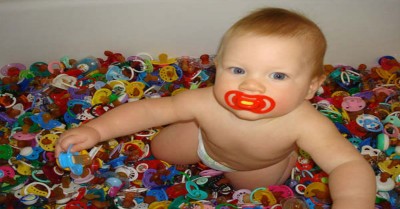While dummies are designed to help comfort and settle children, they are also a potential hazard to infants and young toddlers.
Poorly designed or manufactured dummies can break apart and the small parts can be a choking hazard. Children under three are vulnerable to choking as they have not yet developed the reflex action to cough up objects that lodge in their throats.
Dummies attached to children’s clothes by a ribbon or string can be a strangulation hazard if they wrap around a child’s neck.
How Can A Dummy Cause injury
Choking: The teat or small pieces from the dummy may break off and become lodged in your child’s throat. The whole dummy could also become stuck in your child’s mouth and block their air supply.
Strangulation: Attaching a dummy to your child’s clothing with a ribbon or string presents a strangulation risk if the tie wraps around the child’s neck.
Cuts and abrasions: Most injuries related to dummies are cuts and abrasions suffered by infants when they fall over with a dummy in their mouth.
Selecting A Safe Dummy
- Choose a dummy with a shield and ventilation holes to prevent suffocation if a baby manages to place the whole dummy in their mouth.
- Check the dummy before each use by pulling hard on the teat and tugging on the handle and ring to make sure they will not give way under pressure.
- Check the teat for wear and tear—if it looks worn or damaged, throw it away.
- Regularly sterilise or wash the dummy in hot soapy water, rinse and air dry.
- As far as possible, supervise your baby with their dummy. Never leave a baby with a dummy in their mouth if they cannot remove it on their own.
Mandatory Standard For Dummies
The mandatory standard requirements for babies’ dummies are based on certain sections of the voluntary Australian Standard AS 2432:2015 Standard for Babies’ Dummies and the voluntary European Standard EN 1400:2013+A1:2014 - Child use and care article – Soothers for babies and young children – Safety requirements and test method.
- All components must be free from any sharp edges that could cause injury.
- The shield of the dummy must be of a minimum size so it does not fit fully inside the baby’s mouth.
- The shield must have two or more ventilation holes of a specific size and in certain positions to allow the baby to breathe in case the dummy becomes lodged in the mouth.
- The teat must be smooth and not allow fluid to leak inside or fill the teat as bacteria can grow and potentially cause infection.
- The ring or handle must be secure and not detach from the shield or come apart so as not to become a choking hazard.
This safety information comes in light of a recent incident that occurred in QLD where an18-month-old baby swallowed a dummy.
For more information, on this incident, please read the following: 18-Month-Old Swallows Dummy In Her Sleep
It's so important to make sure that if a child uses a dummy during sleep that you are consisitently checking on them to make sure that their dummy isn't obstructing their breathing or causing a hazard.
References:
Simpler Standards For Baby Dummies, Product Safety Australia
Using A Dummy or Pacifier, Red Nose Australia
Babies Dummies Safety Alert, Australian Competition and Consumer Commission










